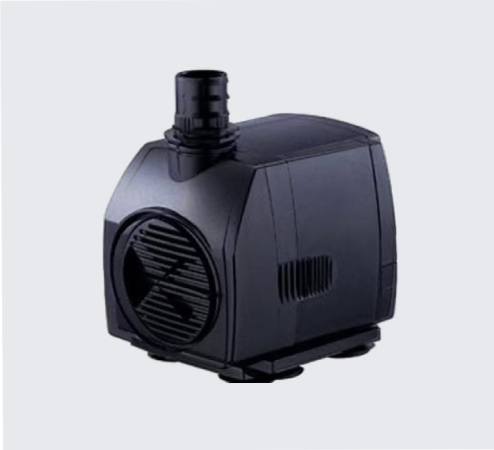
Submersible Fountain Pump
Selecting the right submersible fountain pump can make all the difference in the performance and longevity of your water feature. Whether you’re setting up a new garden fountain or upgrading an existing one, understanding what to look for in a submersible pump is crucial. This step-by-step guide will help you navigate the selection process, ensuring you choose a pump that meets your needs and enhances your outdoor space.
We have also written another related article Kompally Sports.
Step 1: Determine the Fountain Size and Type
Before you buy fountain pumps that are submersible, it’s important to assess your fountain’s size and type. The dimensions and design of your fountain will influence the type and capacity of the pump you need.
- Fountain Size: Measure the height and width of your fountain, as well as the depth of the water reservoir. This information will help determine the appropriate flow rate and pump capacity.
- Fountain Type: Identify whether your fountain is tiered, cascading, or static. Each type has different requirements for water flow and pressure.
For instance, a large, tiered fountain with multiple levels will require a pump with a higher flow rate and greater lift capacity compared to a small, static fountain.
Step 2: Calculate the Flow Rate
The flow rate of a pump is crucial for ensuring that water flows effectively through your fountain. Flow rate is measured in gallons per hour (GPH) or liters per hour (LPH) and should match the requirements of your fountain.
- Flow Rate Calculation: To calculate the required flow rate, consider the size of your fountain’s water feature. A general rule of thumb is to choose a pump with a flow rate that is 1-2 times the volume of your fountain’s reservoir per hour. For example, if your fountain has a reservoir that holds 50 gallons of water, a pump with a flow rate of 50-100 gallons per hour would be ideal.
- Adjust for Fountain Type: Different types of fountains may require different flow rates. For example, cascading fountains generally need higher flow rates to ensure a continuous and attractive water flow.
Step 3: Assess the Pump’s Head Height
The head height, or lift height, refers to the maximum vertical distance a pump can push water. It’s an essential factor in ensuring that your fountain operates efficiently and that water reaches the desired height or distance.
- Determine Head Height: Measure the vertical distance from the pump’s location at the bottom of the fountain to the highest point where water is expected to be delivered. This measurement helps you select a pump with sufficient head height to achieve the desired water effect.
Pump Specifications: Check the manufacturer’s specifications for the pump’s head height capabilities. Ensure the pump can handle the height required for your fountain.
Step 4: Consider Pump Material and Durability
Submersible fountain pumps are exposed to water and may be subject to algae growth and other environmental factors. Therefore, choosing a pump made from durable, high-quality materials is important for long-term performance.
- Material Choices: Pumps are typically made from materials like plastic, stainless steel, or bronze. Plastic pumps are more affordable but may not last as long as stainless steel or bronze pumps, which offer better durability and resistance to corrosion.
- Maintenance Requirements: Consider the ease of cleaning and maintaining the pump. Pumps with removable filters or screens can simplify maintenance and prolong the pump’s lifespan.
Step 5: Evaluate Energy Efficiency
Energy efficiency is an important consideration, especially if your fountain will be running continuously. Choosing an energy-efficient pump can save you money on electricity bills and reduce environmental impact.
- Energy Ratings: Look for pumps with energy-efficient designs and certifications. Some pumps are designed to use less power while still delivering effective performance.
- Variable Speed Pumps: Consider pumps with adjustable flow rates or variable speed settings. These pumps allow you to customize the water flow and adjust the pump’s energy consumption based on your needs.
Step 6: Check for Additional Features
Modern submersible fountain pumps often come with additional features that can enhance their functionality and ease of use.
- Built-in Filters: Some pumps come with built-in filters that help keep the water clean and reduce maintenance.
- Automatic Shut-Off: Pumps with automatic shut-off features can prevent damage if the water level drops too low.
- Remote Controls: Certain pumps offer remote control options, allowing you to adjust the flow rate and other settings from a distance.
Step 7: Set a Budget
Finally, set a budget for your fountain pump purchase. Submersible pumps come in a range of prices, and it’s important to find a balance between cost and quality.
- Price Range: Determine how much you’re willing to spend and compare different models within your budget. Higher-priced pumps often offer better durability and additional features, but there are also budget-friendly options that provide reliable performance.
- Warranty: Check the warranty offered by the manufacturer. A good warranty can provide peace of mind and protection against potential defects.
Conclusion
Choosing the right submersible fountain pump involves careful consideration of your fountain’s size, flow rate, head height, material, energy efficiency, and additional features. By following this step-by-step guide, you can make an informed decision and select a pump that will ensure your fountain operates beautifully and efficiently. Investing time in the right pump will not only enhance the visual appeal of your water feature but also contribute to its long-term functionality and enjoyment.